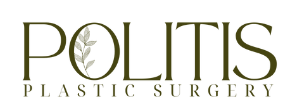Key Takeaways:
- Saline implants, while having a less ideal fill distribution, are absorbed by the body in case of a rupture.
- Silicone or gel implants offer a more even and aesthetically pleasing fill distribution compared to saline implants.
- The team at Politis Plastic Surgery, led by the highly skilled plastic surgeon in Tampa, FL, Dr. Effie Politis, provides comprehensive consultations to guide you through the choice between saline and silicone implants.
Imagine a clinic where your health and aesthetic desires are always the priority. At Politis Plastic Surgery, our seasoned plastic surgeon in Tampa, FL, Dr. Effie Politis, continually strives to make this vision a reality. The clinic’s most recent Instagram post discusses the intricate world of breast implants and, more specifically, the comparison between saline and silicone options.
Breast augmentation is a popular procedure worldwide. As such, it’s crucial to understand the ins and outs of what you’re signing up for, and Dr. Politis is here to guide you. The Instagram video showcases a practical example of a ruptured saline implant. The upside to saline implants, as pointed out by Dr. Politis, is the body’s ability to naturally absorb the saline should a rupture occur.
The video then transitions to demonstrate a saline implant of 425 cc’s. It’s important to note how saline implants fill. When they sit upright, the lower pull stretches, and the top tends to collapse. In layman’s terms, the fill distribution of a saline implant is not always ideal.
By contrast, silicone or gel implants, particularly the newer generation, offer a more cohesive and evenly distributed fill. As demonstrated in the video, these high-viscosity gel implants with a triple polymer capsule provide a much more aesthetically pleasing fill due to their cohesiveness.
In essence, the choice between saline and silicone implants is multifaceted, relying on your aesthetic goals, health considerations, and personal preferences. Dr. Politis and her experienced team at Politis Plastic Surgery in Tampa, FL, are always available to provide comprehensive consultations, ensuring you make an informed decision that suits you best.
References:
- “5 benefits to choosing saline implants – Integrated Aesthetics.” https://www.integratedaesthetics.com/blog/5-benefits-to-choosing-saline-implants/.
- “Advantages of Silicone Breast Implants.” 31 Aug. 2021, https://petersonmd.com/blog/Advantages+of+Silicone+Breast+Implants/294
- “Breast Implant Rupture: Causes, Risks, Signs, Symptoms, and ….” 29 Jun. 2022, https://www.breastcancer.org/treatment/surgery/breast-reconstruction/corrective-reconstruction/implant-rupture.



 You’re at a crossroads. You’ve decided to undergo
You’re at a crossroads. You’ve decided to undergo 



 When it comes to battling the signs of aging, the neck can be a formidable opponent. Despite your best efforts to stay fit and healthy, the neck can sag and wrinkle, betraying your age and stealing your confidence. Enter the
When it comes to battling the signs of aging, the neck can be a formidable opponent. Despite your best efforts to stay fit and healthy, the neck can sag and wrinkle, betraying your age and stealing your confidence. Enter the 



 As you peer into the mirror, searching for the face of your youth, the idea of a facelift might flutter into your thoughts. A
As you peer into the mirror, searching for the face of your youth, the idea of a facelift might flutter into your thoughts. A 